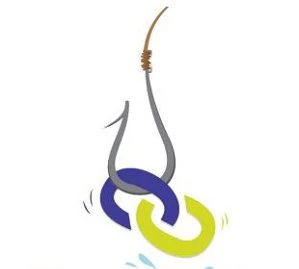Quality is not enough — content also needs a hook

The idea that you’ll attract links simply by creating good content is a myth, argues Nichola Stott, who outlines the extra steps needed for success in securing links.
Every digital marketing conference and ‘authority’ site is awash with advice on content marketing, and how creating great quality content can lead to natural links.
This kind of statement is meaningless and contributes to the groundswell of pointless, off-brand drivel that businesses are greenlighting in their name. Whoever linked to a URL because the contents of the page were of a sufficient ‘quality’?
As marketers, whatever message we’re putting out must be of a standard of quality befitting the brand. That’s the basic principle of the job. Creating marketing content that gets linked to is something else altogether.
Setting aside the paid link economy, understanding what could motivate a writer to link can be assisted by an understanding of journalism. If you’re hoping for links from media sites, the person you’re reaching out to is highly likely to have a formal qualification in journalism.
This means a level of editorial standards and practice will exist. Have a look at the BBC editorial guidelines, which detail the standards of content origin, validity, integrity, source attribution and even style guides and house grammatical standards.
Now, keep this front-of-mind when considering that being a journalist is a job, and publishing is a business. How will a journalist keep their job and their employer keep generating ad revenue by publishing your content?
This is where the quality content myth begins to crumble. You or I may read a beautifully illustrated infographic, packed full of trends and insights in online gaming, and find that interesting because we do business in the space.
How can we pitch trade-specific interesting-to-us content to IGN, Wired, Entertainment Weekly or the BBC? Quite simply, we can’t. Regardless of the quality, the content itself will not ‘sell’ ad impressions. It is not newsworthy.
What makes appealing content?
Putting aside actual news, which will be the responsibility of your PR team to disseminate, there are some characteristics of content that gets picked up; but in essence it all comes down to emotional triggers.
The Daily Mail is the world’s most highly trafficked news site off the back of the majority of content being bikini pictures of minor celebrities. Why? Because this taps into the emotions of lust, pride and envy.

Why does every publisher worth their salt give so much play to the next Apple product? Because being first, latest, newest is appealing to reader’s greed and vanity. And those cat videos? Well, they just make us happy!
Obviously, this is marketing and we need our content to have a positive emotional resonance, so we need to think about stories that will entertain, amuse, surprise and delight readers. Admittedly, gaming is harder than, for example, holidays but, providing your idea is strong enough and has a broad appeal, it can have sway.
This is only part of the answer, however, as not all content that has emotional resonance is link-worthy, even if it is shareworthy and has good audience potential. This is the difference between editorial and curation (think Diply, BuzzFeed and the like), which have large audiences and huge share-appeal due to highly polarising or identifiable content.
You may be able to get some wholesale replication of your content in a contributor’s area if it hits you in the feels, but for the best editorial links there’s still work to do. We need to go some way to find a story angle that a professional writer can work with.
Finding the angle
The propensity for content to have emotional resonance is not enough for quality editorial sites. There has to be something original, polarising, or surprising for a journalist to work with.
Let’s have a look at some real examples of content marketing pieces that have worked really well in the past few years by evincing these qualities.
Original: Original, in web content terms, has come to mean content that isn’t copied, spun or plagiarised. In this sense though, we mean an original idea. This could pertain to the presentation format, the message, or just an original way of looking at something familiar.
A great example of this is how craft beer company Brewdog combines its ethical values and hipster tone-of-voice with its open investment offer, Equity for Punks. A public investment opportunity isn’t original, but the naming, digital crowdsourcing capability and tone of voice is.
The concept has emotion and brand integrity, making it work as both a marketing message as well as a funding source. This content has well over 1,000 natural links from sources such as Forbes, AOL Money and more.

Polarising: Any content that reveals difference of opinion, performance, taste, or other values can work extremely well in editorial.
Polarising groups of people cuts to the core of identity and personality and stirs emotions. For example, “Lady Luck: UK casino map shows women far luckier than men” is the kind of data-story that can work really well, although it would not be so palatable a story the other way around.
Surprising: Our final type of angle is in the element of surprise. This type of angle comes from a data-driven story, or serendipitous discovery that is contrary to expectations.
It can often be difficult for a gaming brand to come across this type of angle using their own data, so instead you may have to think laterally about behaviours, characteristics or experiences of online gaming as opposed to explicit games and data.
A great example of using surprising findings for marketing comes from YouGov. While many of the YouGov data surveys will canvas public opinion on political and macro-economic factors that are entirely newsworthy, they also create more light-hearted stories which have a surprising (to many if not all) outcome.
For example, “Staying up late will be the best thing about being a grown-up”, says a survey of 2000 children. As you can see, these stories do not have to be hard-hitting or world changing but do have to have some credibility in methodology and an interesting, surprising finding.
Hold something back
Finally, even if your content has a great hook and a really counter-intuitive finding about human nature, it is still not guaranteed that a professional writer ‘owes’ you a link.
Providing they cite your company and research as the source of the data this satisfies the professional standards of attribution and editorial quality.
To secure the link you need to keep something in reserve that could be of further interest or value to the reader, or something to make the writer’s life easier. Examples could be:
- Exclusive original artwork (just ask if they could credit with a link)
- An embeddable section or piece of the story (for more visual stories)
- Raw survey data for a data story
- An exclusive angle offer
While there are many reasons that some stories catch fire and are more ‘link-worthy’ than others, not every angle or story type has the potential to be considered, depending on the business and sector.
Each industry has its own potential and limitations when it comes to attracting links. But if you can back up your imagination with credible, well-researched, often data-based hooks like the ones described above, then your chances will be greatly improved.
Nichola Stott is founder of organic search and content marketing agency theMediaFlow.
